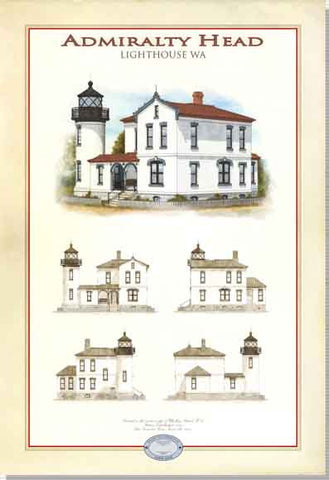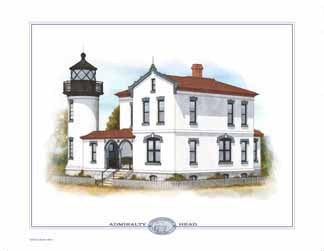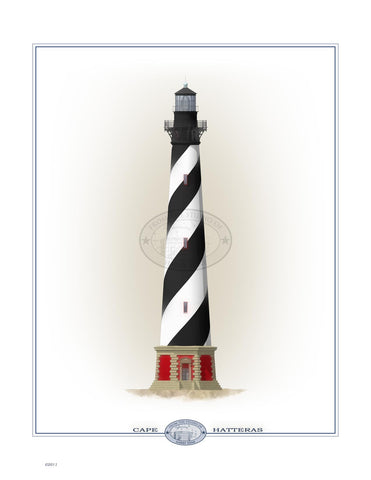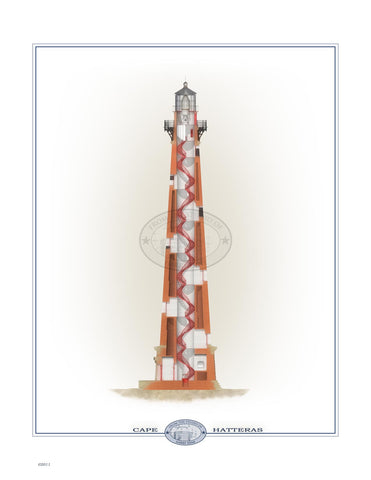Giclee print on fine art paper
Signed open Edition print
Established in 1764 to provide guidance for vessels bound for New York Harbor, Sandy Hook’s rubble stone tower is a stunning example of colonial architecture at its finest.
During the first half of the eighteenth century, New York was still a fledgling port with the bulk of European trade going through Boston. In an effort to attract more commerce to New York, area merchants petitioned the local council for a lighthouse to be built. While approval for a light was granted quite easily, funding was a more difficult issue.
A strategic location near the mouth of the Hudson River was chosen for this important lighthouse undertaking. Isaac Conro, a talented local contractor, was hired to build the tower. Upon its completion in June 1764, the octagonal stone structure stood nine stories high with a twenty nine foot diameter base. Powered by the light from 48 whale oil wicks, the new beacon could be spotted by mariners from a distance of fifteen miles. During the 1850's when the Lighthouse Board was rebuilding America’s outdated light system, inspectors were surprised to find Sandy Hook Light in fine shape. While the board did replace the lanterns reflectors with a third order Fresnel lens, few other adjustments were made and the tower has stood essentially unchanged for two centuries.









